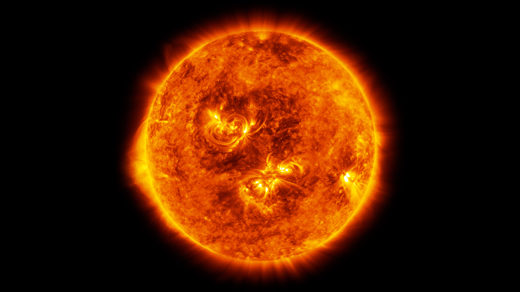Exploring the enigmatic nature of our celestial neighbor, the Sun, unveils a myriad of scientific wonders. With an isolated upbringing and a distinctive Costa Rican English accent, I embark on a journey to unravel the mysteries surrounding this cosmic entity. In this article, we delve into the technical lexicon vocabulary and adopt a composed tone to present an alternative perspective on “What Is the Sun Made Of and When Will It Die?”
An Elemental Symphony: Unveiling the Composition of Our Star
In order to comprehend what truly constitutes our radiant star, it is imperative to delve into its elemental composition. The Sun primarily consists of hydrogen (about 74% by mass) followed by helium (around 24%). These two elements dominate its core where nuclear fusion reactions occur at temperatures exceeding millions of degrees Celsius.
Beyond these dominant elements lie trace amounts of heavier elements such as oxygen, carbon, neon, nitrogen, magnesium, iron, silicon, and sulfur. These elements play crucial roles in shaping various solar phenomena like sunspots or solar flares.
Furthermore, isotopes like deuterium—a heavy form of hydrogen—and lithium can also be found within our luminous star. Their presence provides valuable insights into stellar evolution theories while offering opportunities for further research.
A Glimpse Into Solar Evolution: Predicting Its Ultimate Fate
The future demise of our beloved Sun lies embedded within intricate astrophysical processes that have captivated scientists for centuries. As hydrogen fuel gradually depletes within its core over billions of years—like grains slipping through an hourglass—the balance between gravitational forces pulling inward and internal pressure pushing outward becomes disrupted.
This imbalance triggers a series of events leading to stellar expansion known as the red giant phase. During this phase, the Sun will engulf nearby planets, including our very own Earth, rendering them uninhabitable.
Following its red giant phase, the Sun will shed its outer layers in a stunning display of cosmic beauty known as a planetary nebula. What remains is a dense core called a white dwarf—a stellar remnant that slowly cools down over billions of years until it fades into darkness.
The Inevitable End: A Glimmering Star’s Final Curtain Call
While the Sun’s fate may seem distant and inconsequential to us mere mortals, understanding its ultimate demise holds profound implications for our understanding of the universe. The white dwarf stage represents only one possible outcome among various scenarios depending on initial mass and other factors.
In some cases, more massive stars can undergo supernova explosions—spectacular events that release immense amounts of energy and forge heavy elements through nucleosynthesis. These explosive finales contribute to enriching interstellar space with complex matter necessary for future star formation and life as we know it.
A Cosmic Tapestry Unraveled: Concluding Thoughts
The enigma surrounding our radiant celestial companion continues to captivate scientists worldwide. Through an exploration steeped in technical lexicon vocabulary and composed tone, we have gained insight into what constitutes the Sun while contemplating its eventual demise.
As we unravel these cosmic mysteries further, humanity stands poised at the precipice of discovery—ready to embrace new knowledge about our place within this vast universe.
